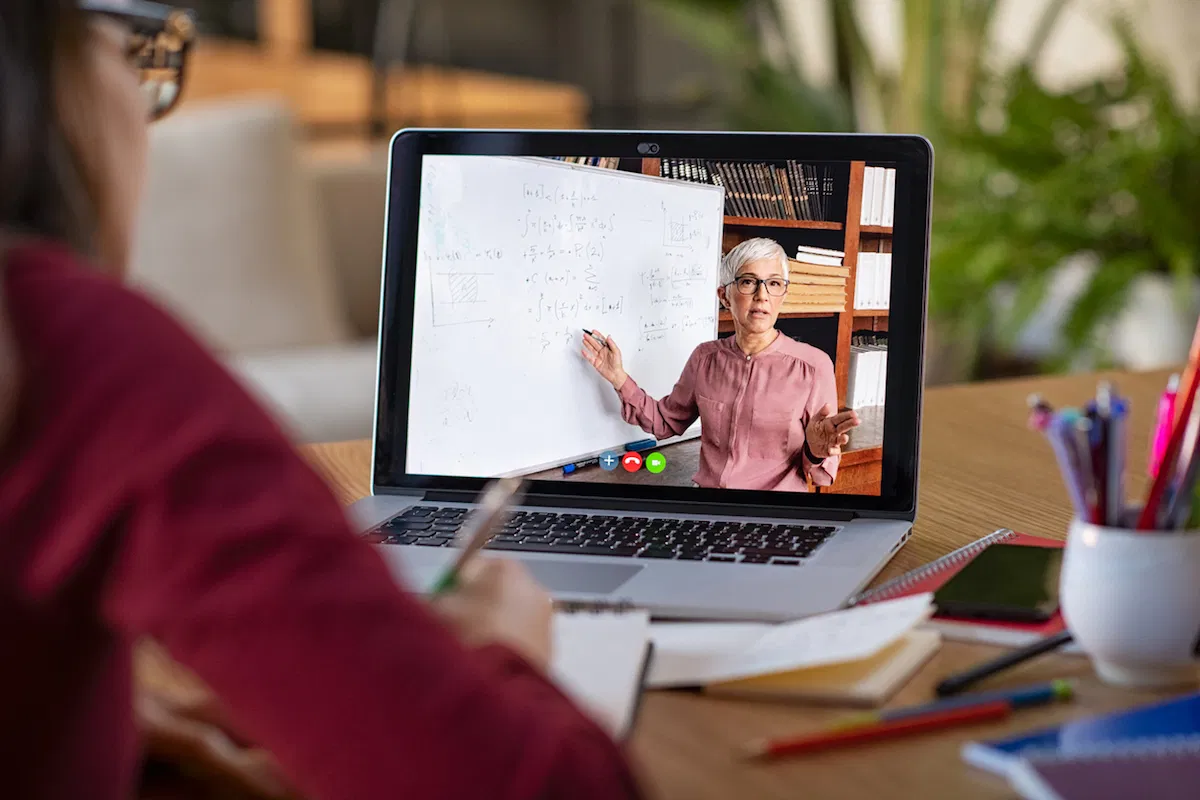Reimagine Lecture Accessibility with AI: A Proposed Method from the Visiotech Team
During her MBA program, our founder, Tiffani Martin, encountered a challenge that’s all too common—lecture videos in accounting and statistics that relied heavily on visuals without explanation. Instructors would solve equations on the screen or draw out graphs without describing the steps. For blind students, that means missing critical moments of instruction.
This type of access gap is often overlooked in course design, particularly in STEM education.
At Visiotech, we’ve been exploring how artificial intelligence might help fill in those gaps. Based on what’s now possible with tools like Google Gemini 1.5 Pro, our team has developed a conceptual method that could improve how blind and low-vision students engage with visual content in lectures, especially when it comes to math.
A Practical Use of Gemini 1.5 Pro in STEM Learning
Gemini 1.5 Pro is built to handle video, audio, and text inputs at the same time. This makes it a strong candidate for analyzing lecture content that mixes visual steps with spoken instruction. Here’s the method we’re proposing:
- Input the Full Lecture Video: The model receives the full lecture, both the professor’s spoken word and any on-screen visuals like whiteboard writing or slide content.
- Process the Visual Elements: Gemini scans the visuals and recognizes mathematical notation, diagrams, and other instructional visuals being used.
- Generate Audio Descriptions in Context: It produces accurate and structured descriptions of what’s being shown. These can be aligned with the professor’s narration.
- Distribute in Multiple Formats: The final descriptions can be delivered as:
- Real-time or layered voiceover
- Extended captions
- Screen-reader–friendly transcripts
This framework could offer blind students a fuller, more immediate understanding of content that would otherwise require post-class accommodations or entirely separate materials.
Rooted in Experience and Designed for Collaboration
Tiffani’s experience in graduate school was the starting point for this idea, but this isn’t just about solving a personal challenge. It’s a call to action for educators, designers, and technologists who are building the future of accessible education.
Accessible instruction should evolve as our tools evolve. Gemini’s capabilities make it possible to integrate inclusion directly into how content is created, not as a follow-up task, but as a built-in part of the process.
Who This Is For
This approach is still conceptual, but the technology is here and ready to be applied. If you’re working in this space, we welcome your insight.
Instructional Designers
Review your lecture content through the lens of access. Where are the visuals carrying the lesson? Could structured AI descriptions make the learning experience more complete?
EdTech Developers
Explore Gemini’s API. Try it on lecture videos with mathematical or data-heavy content. We’re especially interested in how it handles notation and visual clarity.
Educators
Consider how your lessons come across to a student who can’t see the screen. Which moments need more context? Which ones depend entirely on visuals?
Accessibility Professionals and Researchers
Test the descriptions being generated. Assess their usefulness, clarity, and timing. Share where improvements are needed.
This idea was built with real students in mind. Those who learn differently, but don’t expect less. Those who are ready to thrive, if given the tools.
To connect, share your feedback, or start a conversation, email connect@TiffaniJancyn or tag your work with #AccessWithVisio.
